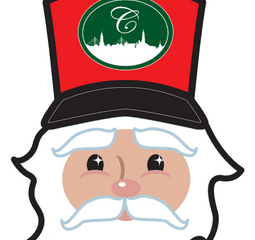Uncategorized
3d art development process
3D is becoming increasingly popular, and the gaming sector is the key driver of this growth.
Game creation and design are difficult processes. Making a game entails developing worlds and filling them with characters, items, weapons, vehicles, flora, wildlife, landscapes, and a plethora of real-life aspects.
Most people who make video games for a living will tell you that the process is never as simple as one-two-three.
The game design process is separated into three major stages: pre-processing, development, and post-processing.
Preprocessing
It entails planning, mapping, scheduling, research, and resource collection for the next manufacturing process.
Concept Creation
The game’s main concept is to explain essential features such as the scale of the universe, character biographies, comprehensive plot, and so on.
Each scene is planned out, demonstrating character activity, shot selection, action sequence, and cinematic direction.
R&D
R&D is carried out in a variety of fields, including: the target audience; designing their playing style, market of the intended audience, software/engine to be used, staffing requirements are established, budgets are fixed, etc.
Game Development Documentation
The Game Development Document (GDD) serves as the development process’s template. This is the blueprint from which other departments will work, defining the important aspects such as the game and its purpose, the programming building blocks, the steps of the design process, and so on.
Mapping
This is called macro mapping, which defines where the game will go, how it will be played, how the player will be guided through it, and so on.
Prototyping
One or more primitive prototypes will be created to determine what works and what doesn’t, whether any flaws exist, and if the concept has legs.
Development
It is the point at which the majority of the tasks are completed.
This is the start of the actual development to refine the plot and design game aspects such as balance, tempo, and gameplay. Also, it can be designed for all assets (characters, creatures, objects, and environments).
3D Design
All of the types of 3d art are mapped into a grid and displayed as 3D objects. The creation of 3D characters starts with simple steps and gradually moves towards complexity. The highly detailed 3D models appear as primitive shapes like a cube or a sphere, and they are the main building blocks for making a model. Artists utilise this figure and use specialized digital tools to sculpt and define it.
Animation
All 3D components are then animated using a series of motions or a scenario.
Texturing
Texturing is applied to all static meshes in 3D models.
Lighting
Lighting is a crucial design element since it gives depth to the game’s atmosphere and creates its 3D appearance. It is utilized to generate mood, suspense, and to simulate the actual environment.
Interactivity
Function and interaction are introduced.
Artificial Intelligence (AI)
AI is employed to respond to the player’s actions or decisions. It is the game’s’ brain, ‘consisting of complicated algorithms that adapt it for the user.
HUDs and Menus Heads-up displays (HUDs) keep the player informed of their progress. They can give information such as the status of points/rewards, timings, map position, and so forth.
Post Processing
Sound Design and Visual Effects
All of the speech, soundtrack, foley, and sound effects necessary for the game’s soundscape are brought together by sound design. To improve the aesthetics, visual effects, or special effects, are added to the scenes.
QA
Quality assurance testers are called in again to test the final game’s rough draft. They test it to its limits and offer useful input on its playability and any flaws that need to be smoothed out.
Refining
The testers’ feedback is taken into account. The final polish is applied to the sound and graphics to perfect the finalized output.
Packaging and marketing
The game’s artwork is utilized to create packaging as well as marketing materials such as posters, web advertising, trailers, and so on.
The game design process is complicated, involving several variations of the game’s overall appearance. The design team of gaming companies in san francisco will create 3D animation, print art, 2D renderings, storyboards, trailers, and other related materials.
Being a part of a game design team will put your abilities to the test and broaden your horizons. However, it is a very rewarding trip!

























